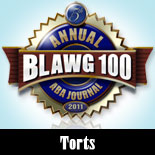A Lawyer At Career Day? An Inspirational Journey Into The Minds of Fifth Graders
Recently, I was asked to speak at a local elementary school for Career Day. The point of the program was to expose fifth grade students to a number of different career options while encouraging them to take school seriously at an early age. It is a worthwhile endeavor, to be sure. But as the program’s lawyer representative, it certainly was a challenge. A member of the military, a professional hockey player, and a video game programmer had the easy task of making their jobs sound fun and exciting. On the other hand, how does a lawyer, a civil litigator at that, impress a group of 10 and 11 year old kids? That was the daunting task before me.
To determine my baseline, I began by asking how many of the students knew what a lawyer actually was. Most of the students raised their hands. For those that did so, I then asked them to tell me what a lawyer does. Their response? Judge Judy. Not the response I sought, but at least I knew there was nowhere to go but up. I attempted to explain the legal profession with Judge Judy’s show serving as a backdrop of sorts, i.e. how the cases would have been prepared and tried had the litigants had legal representation. As I feared, however, the actual Judge Judy is far more entertaining to fifth graders than the Judge Judy model I used.
So if Judge Judy wasn’t the answer, how could I possibly break through with these kids? How could I explain what lawyers do in terms that they could understand? I found myself at a complete loss, and I still had 10 minutes of my allotted time left to kill. Searching for answers, I was saved by something I noticed on the classroom wall – the class rules. That was my golden ticket. What followed may have inspired many young minds to explore the legal profession – but also have earned me a spot on the teachers’ black list. You be the judge.
The interaction went a little something like this:
ME: So, what happens when you break one of these rules?
CLASS: We get punished.
ME: Who punishes you?
CLASS: The teacher.
ME: Well, what would happen if you had a lawyer?
CLASS: . . .
ME: Let’s pretend you got accused of talking to a friend while the teacher is teaching. You hire me to represent you. What do I do? I start by investigating the accusation. I interview all of the potential witnesses. Those interviews might establish that no one actually heard you talking at all. Maybe the teacher was told that you were talking by John, who got his information from Kelly, who heard from Jennifer that you were talking. And, Jennifer might not be very credible because she has a long history of making false accusations and was on the other side of the room when she allegedly heard the offense.
Or, the investigation might reveal that you were actually whispering during class. The rule says no “talking” during class. Because “whispering” is technically not “talking,” maybe you didn’t break the rule after all.
With a strong defense in hand, we might have to take this case to trial. Even so, we might get a tip that all 12 of our jurors were spotted with bumper stickers on their cars which say, “Mothers Against Classroom Talking.” If that is the case, you are probably going down even if we have a strong defense, so we may need to explore settlement.
If we find out that you, in fact, were talking in the class and violated the rule, we go to your teacher and try to reduce your punishment. Even though the typical penalty for the rules violation may be 10 minutes of lost recess, we bargain for 5 minutes based on your apology and good behavior.
The hypothetical warranted a strong, positive reaction from the class. Whether the reaction was the sound of bright, young minds being inspired to explore a legal career or that of minds spinning with new ideas on how to get out of rules violations is yet to be seen. The example was far from perfect and definitely overly-simplified the process. Nonetheless, what better way to explain discovery, statutory construction, and settlement negotiations to a fifth grade class? In any event, the kids seemed to have a better sense of what lawyers do following the presentation. On the other hand, the teachers were busy exploring the potential loopholes in their classroom rules.














